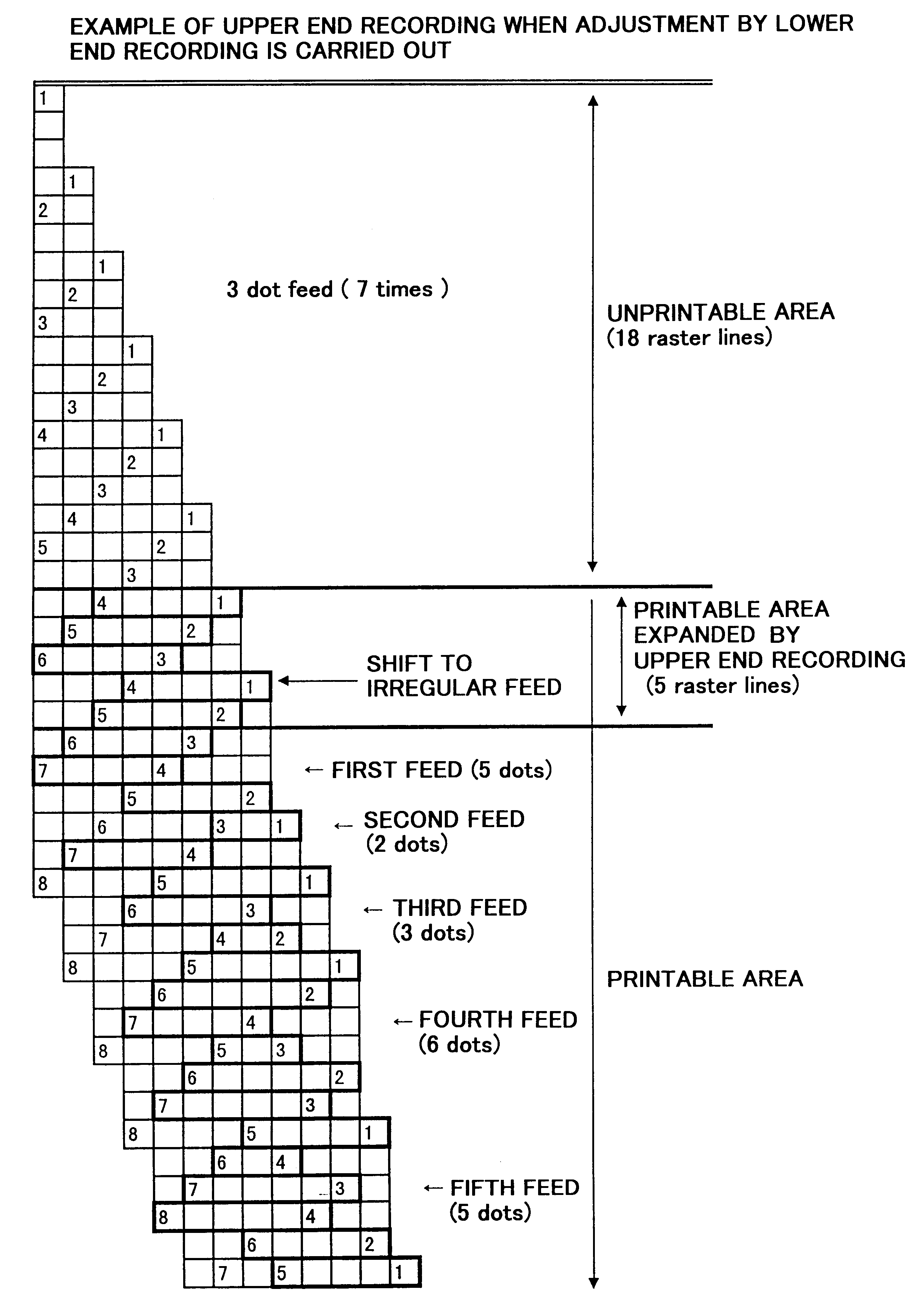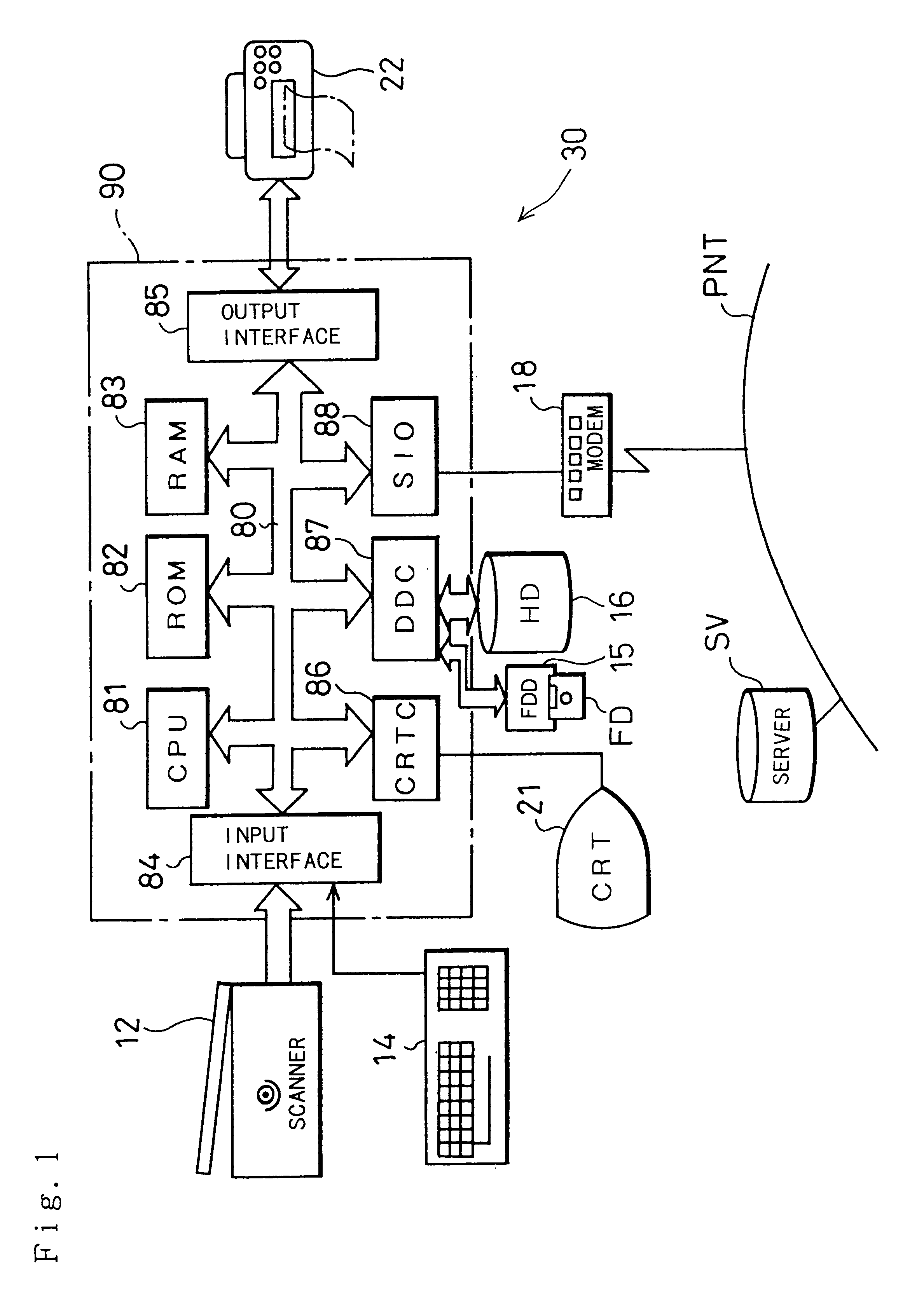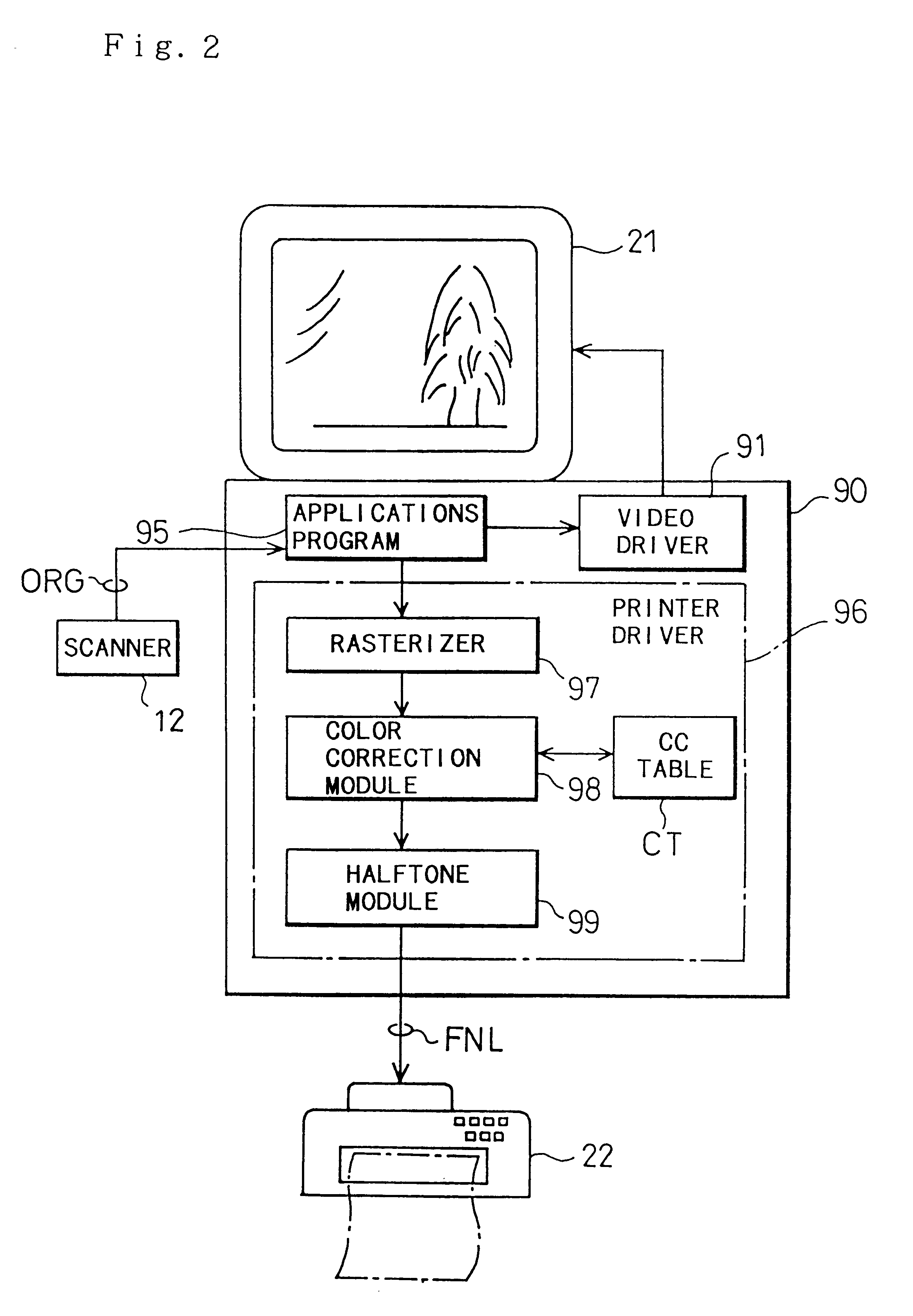Dot recording using specific schemes at the end of recording medium
a technology of recording medium and recording scheme, applied in the direction of digitally marking record carriers, visual presentation using printers, instruments, etc., can solve the problems of insufficient utilization of nozzles, inapplicability of sub-scan feed other than "minute feeding" for and inability to apply the lower end recording schem
- Summary
- Abstract
- Description
- Claims
- Application Information
AI Technical Summary
Problems solved by technology
Method used
Image
Examples
first embodiment
of the lower end recording scheme in the The dot recording scheme of FIGS. 17 and 18 is similar to that of FIGS. 15 and 16. The only difference from that of FIGS. 15 and 16 is that the lower end line of the print execution area is set above the lower end line of the printable area as shown in FIG. 18. This is because the position of the lower end line of the print execution area on the sheet depends upon the sheet settings in the printer driver and the page settings in the applications program. In actual procedure, the lower end line of the print execution area is determined according to the sheet settings and the page settings, and parameters of the lower end dot recording scheme is determined so that the printable area includes the lower end line of the print execution area.
In the example of FIG. 18, it is determined whether or not the 5-dot sub-scan feed is to be changed to the transient feed of one dot in the following manner. When the 5-dot sub-scan feed in the course of the i...
example 2
In Example 2 of the lower end recording scheme, the dot positions to be recorded by the respective nozzles during each main scan are determined based on the history of dot recording in the middle area recording scheme. By way of example, the raster line on the lower end of FIG. 19 is scanned by the first nozzle in the second main scan of the lower end recording scheme. Recording of this raster line, however, has been completed by the seventh nozzle and the third nozzle in the middle area recording. The first nozzle accordingly does not record any dots on this raster line. In the example of FIG. 20, those raster lines which are scanned by three different nozzles are not recorded by the thirdly-passing nozzle. On the raster lines where some dot positions have been left unrecorded in the middle area recording, on the other hand, the lower end recording scheme executes recording of the remaining dot positions.
FIGS. 21 and 22 show Example 3 of the lower end recording scheme in the first ...
example 3
In Example 3 of the lower end recording scheme, the dot positions to be recorded by the respective nozzles during each main scan are determined based on the history of dot recording in the middle area recording, although the details are not described here.
FIGS. 23 and 24 show Example 4 of the lower end recording scheme in the first embodiment. The scanning process of FIGS. 23 and 24 up to the (n+7)-th sub-scan feed is identical with that of FIGS. 13 and 14 without the lower end recording scheme. The example of FIGS. 23 and 24 changes the (n+8)-th sub-scan feed of 6 dots to the transient feed of 3 dots and shifts to the lower end recording scheme where the constant sub-scan feeds are applied.
In Example 4 of the lower end recording scheme, it is determined whether or not the 6-dot sub-scan feed is to be changed to the transient feed of 3 dots in the following manner. When the 6-dot sub-scan feed in the course of the irregular feeding of the middle area recording causes the lower-end n...
PUM
 Login to View More
Login to View More Abstract
Description
Claims
Application Information
 Login to View More
Login to View More - R&D
- Intellectual Property
- Life Sciences
- Materials
- Tech Scout
- Unparalleled Data Quality
- Higher Quality Content
- 60% Fewer Hallucinations
Browse by: Latest US Patents, China's latest patents, Technical Efficacy Thesaurus, Application Domain, Technology Topic, Popular Technical Reports.
© 2025 PatSnap. All rights reserved.Legal|Privacy policy|Modern Slavery Act Transparency Statement|Sitemap|About US| Contact US: help@patsnap.com



